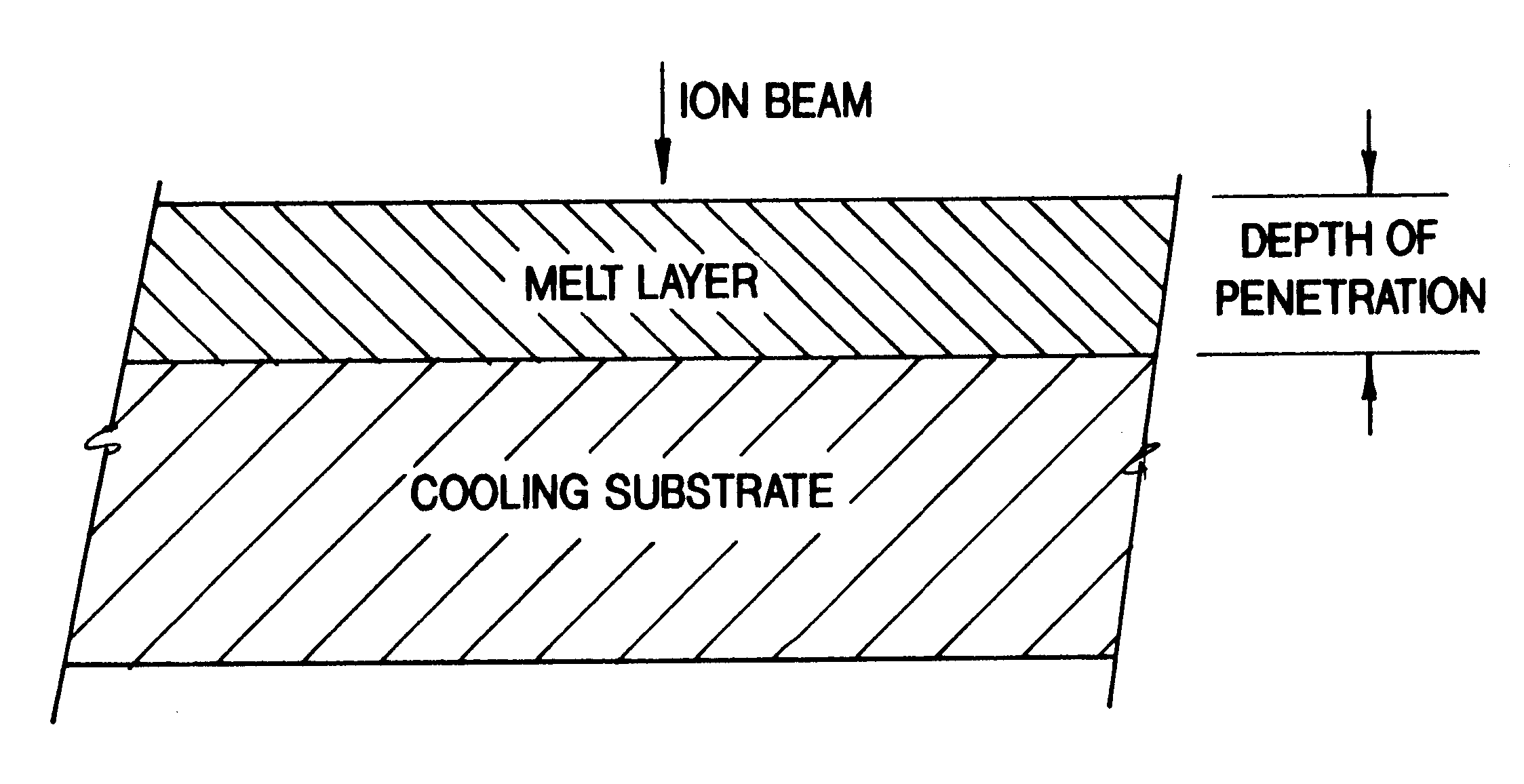Method and apparatus for altering material
a technology of material and applied in the field of methods and apparatus for altering materials, can solve the problems of unsatisfactory expectations of such technologies, limited commercial success of laser thermally altering the near surface characteristics of materials, and inconvenient treatment, etc., to achieve high average power and repetitive operation, high energy, and low cost
- Summary
- Abstract
- Description
- Claims
- Application Information
AI Technical Summary
Benefits of technology
Problems solved by technology
Method used
Image
Examples
examples
Applications of present invention include production of low cost materials with treated surfaces for handling corrosive environments and treatment of large area metal sheets and critical components used in manufacturing and other areas where hardness, toughness and corrosion or wear resistance are important. It can also be used to produce smooth, crack-resistant ceramic surfaces by melting and re solidification using pulsed ion beams. By varying ion beam deposition levels and pulse durations it is also possible to use this technology for either surface cleaning or annealing. At high deposition levels (.about.30 J / cm.sup.2) it is possible to do shock hardening of materials. Polymer processing and ion implantation can be done at lower deposition levels.
Examples of thermal surface treatment using this process are shown in FIGS. 5, 6, 7a, 7b and 8a, 8b. Surface cleaning or preparation without the use of organic solvents, can be accomplished by choosing higher mass ions (e.g. nitrogen, c...
PUM
| Property | Measurement | Unit |
|---|---|---|
| impedance | aaaaa | aaaaa |
| impedance | aaaaa | aaaaa |
| voltage | aaaaa | aaaaa |
Abstract
Description
Claims
Application Information
 Login to View More
Login to View More - R&D
- Intellectual Property
- Life Sciences
- Materials
- Tech Scout
- Unparalleled Data Quality
- Higher Quality Content
- 60% Fewer Hallucinations
Browse by: Latest US Patents, China's latest patents, Technical Efficacy Thesaurus, Application Domain, Technology Topic, Popular Technical Reports.
© 2025 PatSnap. All rights reserved.Legal|Privacy policy|Modern Slavery Act Transparency Statement|Sitemap|About US| Contact US: help@patsnap.com



